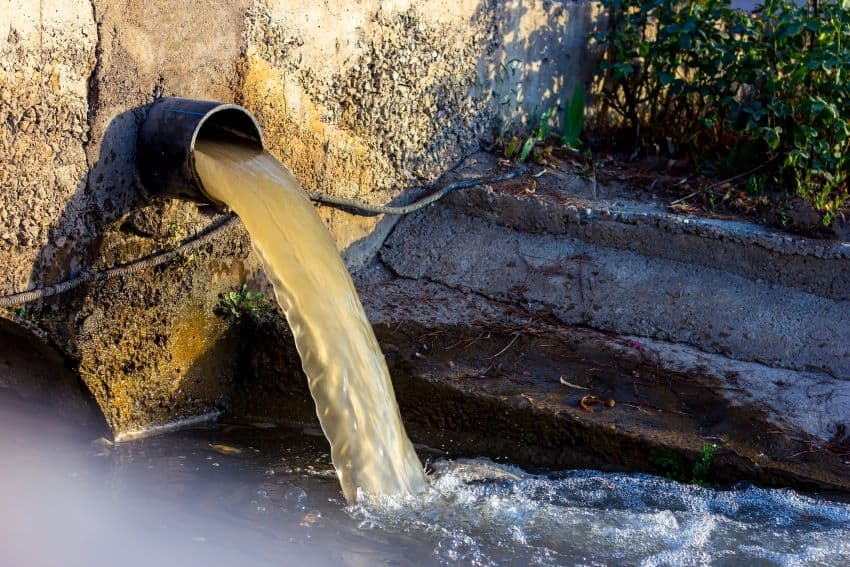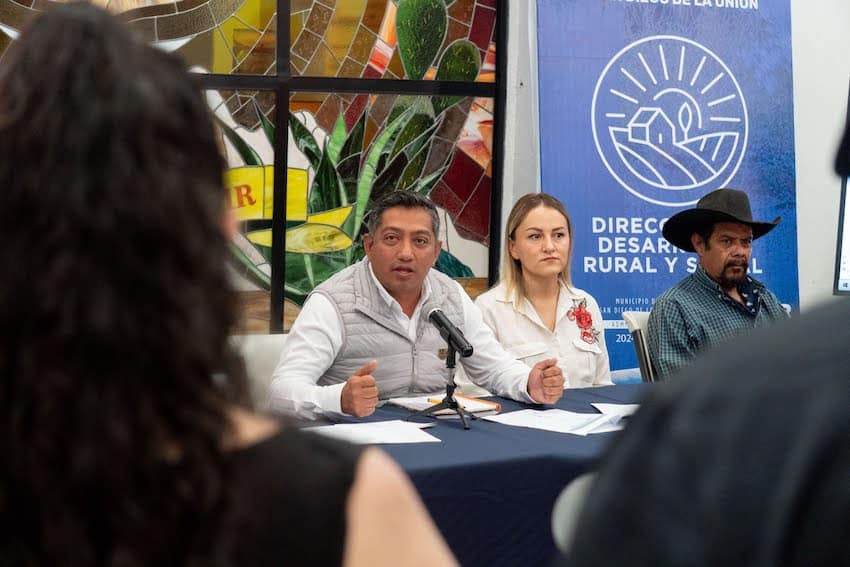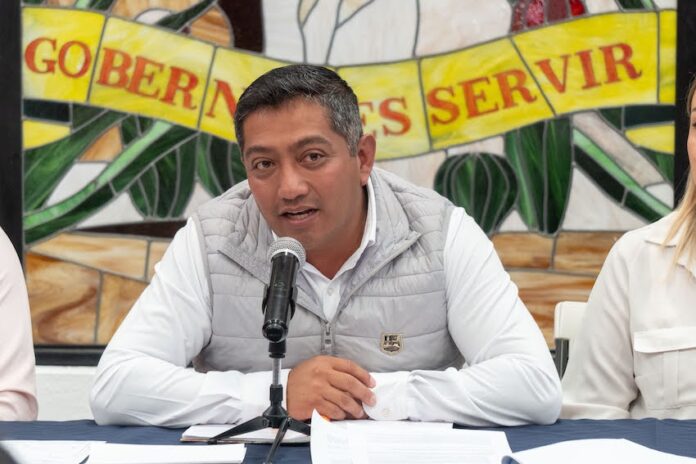As communities around San Miguel de Allende, Guanajuato, continue to grow, so too does the pressure on already strained groundwater supplies.
In the Upper Laja River Basin, home to more than 740,000 people across seven municipalities, deeper wells and worsening contamination have become the norm — bringing mounting health risks and growing public concern. Those concerns were front and center last Thursday when the mayor of San Diego de la Unión, a community north of San Miguel de Allende, confronted the crisis head-on.
“When we open the tap, we are poisoning ourselves.”
With those words, Mayor Juan Carlos Castillo Cantero of San Diego de la Unión opened a press conference that may prove to be a turning point for his municipality — and potentially for the entire Upper Laja River Basin, in the northeast of Guanajuato state. The event marked a rare and striking moment of transparency in local government, as the mayor laid bare the extent of water contamination affecting San Diego de la Unión and the surrounding communities.
The issue is neither new nor isolated. Across the basin, aquifers are being overdrawn and contaminated, pushing entire municipalities toward a full-scale public health crisis. Water quality monitoring conducted between April and July 2024 found that 20 of the 23 rural wells tested in San Diego de la Unión were unsafe for daily use. These wells supply water to 59 rural communities. Eleven wells exceeded Mexico’s legal limit for arsenic, and nineteen for fluoride — both contaminants linked to serious long-term health problems. The findings violate national regulations and international health guidelines.
“This isn’t just about water,” said Dylan Terrell, Executive Director of the NGO Caminos de Agua. “It’s about systemic health deterioration — kidney failure, dental and crippling skeletal fluorosis, cognitive issues in children. And it’s all invisible until it’s too late.”
Caminos de Agua’s Alvaro Gutiérrez Berra, who oversees water monitoring, emphasized the risks. “There’s no such thing as a safe level of arsenic. Even small amounts accumulate. The well at Ex-Hacienda de Jesús tested at nearly five times the legal limit.” In San José del Charco, fluoride measured 4.08 mg/L, more than four times the legal standard. Across the municipality, 59 out of 71 communities are now confirmed to have unsafe water.
“This is a ticking time bomb,” the mayor warned. “If we don’t act now, there won’t be enough resources to care for so many sick people. No government or family can bear the cost of a kidney disease epidemic.” A single hemodialysis session can cost up to 1,500 pesos, with patients requiring multiple treatments weekly, costs far beyond the reach of most rural families.
Breaking the silence
Public health risks related to water infrastructure are often downplayed or left for civil society groups to highlight. That’s why Mayor Castillo Cantero’s direct language was so striking — and for many, overdue. “The alarms are sounding—whether we want to see them or not,” he said. “We can’t keep ignoring them. We must act now—for our health, for our children, for future generations.”
Gudelia Trejo’s community of Pozo Ademado had excessive levels of fluoride and arsenic until they began building rainwater harvesting systems. “I started to feel relief from all the pain because I was one of many people who used to survive on painkillers. Rainwater harvesting was something new for us, a very beautiful thing. A breath of life,” said Trejo.

Community-driven responses
Despite the grim data, the mood wasn’t hopeless. Castillo Cantero emphasized that action is already underway.
The municipality, in partnership with Caminos de Agua and grassroots organizations SECOPA and COENLAVIS, has installed over 490 rainwater harvesting systems (SCALLs) since 2021 and is currently working to build an additional 140 this year. These systems include cisterns that collect and store clean, arsenic- and fluoride-free rainwater and are combined with household water filters to make the water fit for human consumption. A properly used 5,000-liter cistern can supply a family of five with safe water for at least six months.
Reverse osmosis filters, which are effective against heavy metals, are also being deployed, though their cost and infrastructure needs make widespread distribution difficult.
“These contaminants can’t be boiled out,” said Gutiérrez Berra. “Common filters like carbon or UV don’t remove them. And bottled water is 100 times more expensive than municipal supply—and bad for the environment.”
María del Rosario, from the community of Los Ricos, helps take care of the groundwater treatment system there, a community-scale arsenic and fluoride water treatment plant designed by Caminos de Agua and their academic partners. “We had many years without safe drinking water, while taking care of the groundwater treatment system is hard work, it’s changed the reality of my family and community,” she said.
A regional issue demanding collective action
Mayor Castillo Cantero stressed that San Diego de la Unión cannot solve the crisis
alone. “This is a regional crisis,” he said. “We share an aquifer with seven other municipalities. If one of us fails to act, we all suffer.”
He urged neighboring mayors, state officials and federal agencies to coordinate efforts — and to revive initiatives like FONASA, a federal program that once funded rainwater harvesting systems and filters but has since been discontinued.

“We deeply regret the elimination of FONASA,” he said. “That initiative gave us a real chance to build household-level water security. Now we’re left raising awareness on our own—but awareness isn’t enough.”
“This isn’t something the government can solve alone. We need awareness, collaboration and pressure.”
That includes a cultural shift in how residents understand water risks.
The mayor said there has been a shift in priorities. He said that citizens often demand streetlights or paved roads because they don’t understand the invisible threat in their water, but once they do, they start asking for cisterns and filtration systems.
The future at stake
In his closing remarks, Castillo Cantero didn’t sugarcoat the stakes.
“If we don’t act now, we’re jeopardizing the health of future generations,” he said. “This isn’t a soap opera episode. It’s a real crisis we live with every day. And this isn’t a call to alarm — it’s a call to act.”
